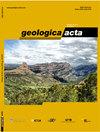摩洛哥西南部Tarfaya盆地Cenomanian - Turonian沉积岩沉积环境与烃源岩潜力
IF 2
4区 地球科学
Q2 GEOLOGY
引用次数: 8
摘要
通过有机地球化学和无机地球化学分析,对塔里木盆地塞诺曼系和土鲁系油页岩沉积环境和烃源岩潜力进行了综合评价。本研究基于Tarfaya Sondage-4井的岩心样本,该井穿透了超过300米的中白垩统富含有机质的矿床。对242份样品进行了总有机碳和无机碳、总硫和主要元素、有机岩石学、岩石热解、居里点热解-气相色谱-质谱分析和溶剂提取物的分子地球化学分析。根据主要元素,下格诺曼期与其他层段的区别在于硅酸盐含量较高,碳酸盐含量较低。此外,分子地球化学表明,在塞诺曼-土伦边界事件(CTBE)期间,海底水体缺氧;海洋缺氧事件2 (OAE2)。作为Sorg/Corg比值的代表,总噻吩/总苯化合物的比值由热解产物组成计算得到。结果表明,Sorg/ Corg在Cenomanian下部低,在Cenomanian上部中等,在CTBE (Cenomanian - Turonian Boundary Event)非常高,在Turonian样品中很高。岩石评价结果表明,下塞诺曼期烃源岩为中等富碳有机烃源岩,热成熟后具有良好的生烃潜力。另一方面,上盖诺曼—Turonian期样品有机碳含量较高,可归类为亲油烃源岩。根据Tmax数据,所有岩石都是热未成熟的。显微研究表明,所有样品均以亚显微有机质为主,且烟煤和褐藻煤含量不同。下塞诺曼尼亚样品几乎没有可见的有机物,也没有烟煤。上盖诺曼尼亚期和CTBE期样品中烟煤含量较低,可见有机质含量较少,而土鲁尼亚期样品则由普通烟煤向富烟煤转变,并在较年轻的层段中呈现较高的可见有机质含量。有机质类型的差异主要与早期成岩干酪根硫化作用和上升流沉积环境有关。干酪根硫化受碳酸盐、铁、硫以及有机质的关系控制。富有机质烃源岩可分为:ⅰ)低有机质-中等富有机质烃源岩、ⅱ)中有机质-富有机碳烃源岩、ⅲ)高有机质-富有机碳烃源岩和ⅳ)非常高有机质-富有机碳烃源岩,后者代表CTBE段。类型2 ~ 4在成熟或人工油页岩改造后将生成富硫石油。这种有机和无机相结合的方法揭示了导致世界级油页岩开发的各种过程,这些油页岩沉积于Cenomanian至Turonian。此外,研究还揭示了沉积环境的变化如何控制干酪根的硫化作用,以及有机质的保存和结构。这种详细的方法可以更好地了解全球范围内Cenomanian - Turonian的烃源岩发育情况,因为在全球范围内已经确定了与OAE2相关的矿床的许多地球化学特征。本文章由计算机程序翻译,如有差异,请以英文原文为准。
Depositional environment and source rock potential of Cenomanian and Turonian sedimentary rocks of the Tarfaya Basin, Southwest Morocco
Detailed organic and inorganic geochemical analyses were used to assess the depositional environment and source rock potential of the Cenomanian and Turonian oil shale deposits in the Tarfaya Basin. This study is based on core samples from the Tarfaya Sondage-4 well that penetrated over 300m of Mid Cretaceous organic matter-rich deposits. A total of 242 samples were analyzed for total organic and inorganic carbon and selected samples for total sulfur and major elements as well as for organic petrology, Rock-Eval pyrolysis, Curie-Point-pyrolysis-gaschromatography-Mass-Spectrometry and molecular geochemistry of solvent extracts. Based on major elements the lower Cenomanian differs from the other intervals by higher silicate and lower carbonate contents. Moreover, the molecular geochemistry suggests anoxic bottom marine water conditions during the Cenomanian-Turonian Boundary Event (CTBE; Oceanic Anoxic Event 2: OAE2). As a proxy for the Sorg/Corg ratio, the ratio total thiophenes/total benzenes compounds was calculated from pyrolysate compositions. The results suggest that Sorg/ Corg is low in the lower Cenomanian, moderate in the upper Cenomanian, very high in the CTBE (CenomanianTuronian Boundary Event) and high in the Turonian samples. Rock-Eval data reveal that the lower Cenomanian is a moderately organic carbon-rich source rock with good potential to generate oil and gas upon thermal maturation. On the other hand, the samples from the upper Cenomanian to Turonian exhibit higher organic carbon content and can be classified as oil-prone source rocks. Based on Tmax data, all rocks are thermally immature. The microscopic investigations suggest dominance of submicroscopic organic matter in all samples and different contents of bituminite and alginite. The lower Cenomanian samples have little visible organic matter and no bituminite. The upper Cenomanian and CTBE samples are poor in bituminite and have rare visible organic matter, whereas the Turonian samples change from bituminite-fair to bituminite-rich and to higher percentages of visible organic matter towards the younger interval. These differences in the organic matter type are attributed to i) early diagenetic kerogen sulfurization and ii) the upwelling depositional environment. Moreover, kerogen sulfurization was controlled by the relationship between carbonate, iron and sulfur as well as the organic matter. Thus, the organic carbon-rich deposits can be grouped into: i) low Sorg and moderately organic matter-rich oil prone source rocks, ii) moderate Sorg and organic-carbon-rich oil prone source rocks, iii) high Sorg and organic carbon-rich oil prone source rocks and iv) very high Sorg and organic carbon-rich oil prone source rocks, the latter representing the CTBE interval. Types 2 to 4 will generate sulfur-rich petroleum upon maturation or artificial oil shale retorting. This integrated organic and inorganic approach sheds light on the various processes leading to the development of the world-class oil shales deposited through the Cenomanian to Turonian. In addition, this study shows how the changes in the depositional environment might have controlled kerogen sulfurization and organic matter preservation and structure. This detailed approach provides a better understanding on source rock development during the Cenomanian to Turonian in a global context, as many of the geochemical features were identified worldwide for deposits related to OAE2.
求助全文
通过发布文献求助,成功后即可免费获取论文全文。
去求助
来源期刊

Geologica Acta
地学-地质学
CiteScore
2.50
自引率
6.70%
发文量
13
审稿时长
>12 weeks
期刊介绍:
- Relevant conceptual developments in any area of the Earth Sciences.
- Studies presenting regional synthesis.
- Thematic issues or monographic volumes presenting the results from one or more research groups.
- Short papers reflecting interesting results or works in progress.
- Contributions and results from Research Projects, Workshops, Symposiums, Congresses and any relevant scientific activity related to Earth Sciences.
- Geologica Acta aims to stimulate rapid diffusion of results and efficient exchange of ideas between the widespread communities of Earth Science researchers (with special emphasis on Latinamerica, the Caribbean, Europe, the Mediterranean
 求助内容:
求助内容: 应助结果提醒方式:
应助结果提醒方式:


